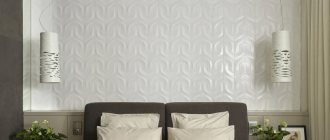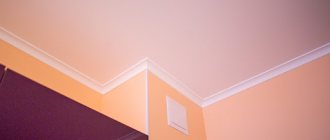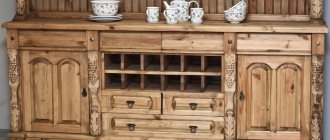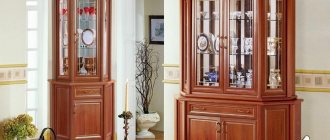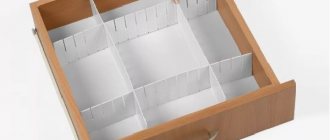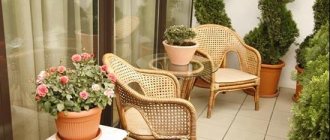Determining the type of fountain
When water enters the nozzle, the so-called open type. A stream of water in this case appears due to level differences in the water. But because of this, the water pressure is weak and constant monitoring of the water level is necessary. As a result, the water quickly becomes cloudy.
When creating such a fountain, it is worth taking care of a medium-sized tank installed above the nozzle 1 m upward.
When pump assembly is required. This option is more suitable and effective to use.
The pump located at the bottom ensures constant circulation of water. As a result, the water pressure is higher and the fountain spray is more spectacular.
Pumps are also divided into two types according to the type of device:
- Submersible. The pump is located at the bottom of the reservoir. The structure includes: a pipeline, a pump and a nozzle, on which the shape of the outlet stream depends. This fountain looks like a spring flowing strongly from underground.
- Superficial or stationary. Basically, such a fountain is made of artificial stone in the form of various figures: a girl, an animal, a vase, a flower, etc. As a result, it looks like a sculptural masterpiece. Such facilities are available in city parks of culture and recreation.
Choosing the design and placement of a homemade fountain
Before you start arranging the fountain, you should think about ensuring that its appearance is in harmony with the design of your summer cottage, and its dimensions correspond to the size of your allotment.
A fountain with a sculptural composition of ancient gods, animals and amphibians will fit perfectly into a classical garden with a well-defined layout. It is most convenient to make such figures from artificial stone, that is, polymer concrete. The named material can withstand any frost.
A modern garden will be decorated with a fountain built from glass and concrete, polymer materials and stone. A design of this type should be laconic, which will be emphasized by thin silver streams of water.
The rustic style of landscape design will be supported by a composition consisting of large stones and wooden elements. In this case, a cart or a mill will serve as a successful addition to the design.
The factory-made floating fountain deserves special attention. It can be fixed in one place or another. In a large body of water, it is appropriate to place several torches of scattering water.
A great idea for creativity is floating fountains. The miracle of levitation is easy to implement with your own hands in your yard, if you pay attention that the supporting element and the supply tube of the structure are hidden in the stream of water. For example, heavy stone can be imitated using plastic panels for finishing the facade, and support will be provided by a thin stainless steel tube.
An interesting effect can be obtained by directing two jets of water against each other. In this case, high precision and accuracy of the design are required.
If you don't like bathing in a barrel, you can put a dummy head and arms in there, and then release a stream of water from its mouth. People around you will definitely pay attention to such an unusual solution.
The trickles of water flowing down the glass look original. Obviously, such a product is subject to homemade craftsmen, but the holes for the outlet of water jets from the upper distribution tube must be made especially carefully.
You should take the choice of location for the fountain seriously. So, too close proximity of trees and bushes will lead to the appearance of leaves and debris in the water. In this case, the device filter will have to be replaced or cleaned frequently. Moreover, tree roots can destroy the reservoir bowl, leading to water leakage.
It is better if the sun visits the surface of the water half of the daylight hours. This lighting mode favors optimal activity of aquatic plants, which can also pollute the device filter.
There is no need to take risks and mount the water decoration too close to the wall of the building. Otherwise, moisture can lead to destruction of both the foundation and the walls of the building. Another addition to a pond in the yard can be the arrangement of a stream and a waterfall, as discussed in the article “An artificial waterfall in the yard, in the garden and at the dacha - how to do it yourself.”
When determining a suitable location for organizing a garden fountain, do not lose sight of the slope of the earth's surface.
On a hilly piece of land, it is better to install a picturesque decorative part in the lowland. Thus, you will adjust the amount of groundwater and ensure a more complete saturation of the air with oxygen molecules.
You should not build fountains:
- almost next to the house, so as not to oversaturate the walls with moisture.
- in the open sun, otherwise the water will quickly bloom due to direct rays of the sun.
- near massive vegetation and trees, since roots can disrupt the waterproofing, and falling leaves, fluff, etc., will clog the water.
There should be at least 50 cm from the fountain to the area of vegetation, houses or furniture, so that the plants do not die from waterlogging, and the furniture does not fail for the same reason.
The most advantageous place to place the fountain would be a slightly shaded place, hidden from the wind, next to sources of water and electricity, in order to reduce the consumption of wires and the time for their insulation.
Once a suitable location has been chosen, you can move on to the next step: choosing the shape and depth.
Note!
Decorative fountains and features of their installation: selecting style, location and equipment
If you decide to make a fountain in your country house or at home, then you must initially understand what type and size it will be. It is recommended to design a device of medium size relative to the area of the site.
Also note that the power of the pump for supplying water will depend on the size of the fountain. It is highly not advisable to install it:
- Near a residential building. This can cause mold to form on the walls.
- Avoid open spaces. Due to direct sunlight, the water will begin to bloom.
- Near planted trees. Roots can damage the waterproofing.
- On slopes and uneven ground. Choose a lower, level place.
Before building a fountain in your dacha, it is important to ensure that its design matches the general style of landscape design, and that it itself is proportionate to the site. The larger the area of the site, the more massive the fountain can be - on a standard six hundred square meters, a large structure with sculptures and high sides will look extremely ridiculous.
Therefore, the type of landscape should be taken into account:
- classical garden - a garden with a strict, consistent layout will perfectly complement a sculptural fountain: ancient gods, young maidens, cupids and monsters;
- natural garden – “natural” fountains, geysers or mini-waterfalls framed with natural stone, pebbles and wood would be appropriate here. Or it could be a stylization of a spring, in which a timid trickle of water makes its way through a pile of stones;
- modern garden - fountains are built from metal and concrete, natural and artificial stone, polymers and glass. Such a fountain is a thoughtful composition in the minimalist style, which is characterized by thin, thread-like streams of water;
- country - this can be a composition of clay jugs and boulders, stylized as an old well. A characteristic element of such fountains is often a mill wheel.
Separately, it is worth mentioning floating fountains - they can be launched into any relatively large body of water. These fountains have a pump with a special float, so it can drift freely over the entire surface.
It is very important to choose the right place for the fountain:
- it should not be placed in an area of active sun - the sun’s rays will provoke the development of microscopic algae, and the water will “bloom”;
- At the same time, you should not place the fountain near trees - the root system can damage the fountain bowl and break its tightness. In addition, leaves, fluff, seeds and fruits that fall into the water will clog the filters;
- drops of water should not fall on plants, garden furniture or walls of the house - excessive humidity can cause damage to things and cause the death of plants. The recommended distance is at least 50 cm from furniture, walls and plants, but here you should additionally take into account the height of the jet and the possibility of moisture being carried by the wind;
- proximity to a source of electricity to connect the pump.
The next stage of creating a fountain is the selection of equipment:
- container – for the fountain bowl, you can use ready-made plastic fonts (containers), which provide reliable waterproofing and are frost-resistant and durable. For a large fountain, you will have to prepare and concrete the foundation pit manually;
- pump - it ensures continuous movement of water flow. The pump from the bowl, through the pipeline, takes water and pumps it under pressure to the nozzle, thereby the pump acts as the “heart” of the entire system. Based on the installation method, pumps are divided into two types. Submersible (underwater) are mounted in a bowl, directly in the water (Fig. 1), they take water directly from the font and supply it to the nozzle through a filter under pressure. They are placed on a slight elevation - this prevents bottom sediments from getting inside the pump. The main advantage of a submersible pump is ease of installation and compactness.
A surface pump (Fig. 2) is mounted on land; it sucks water through a filter through a water supply system and then supplies it to the nozzle under pressure. The advantage of this approach is the reliability and durability of the pump, as well as the ease of its maintenance. The pump power is selected depending on the desired jet height (water flow intensity) and the size of the fountain bowl;
- The filter is an important part for a home fountain. In most cases, water from the fountain bowl enters the pump with some contaminants. If the water is not filtered, the pump will quickly lose its functionality;
- lighting - will add decorativeness to the fountain, especially in the evening;
- receiver - a pressure tank, the installation of which will ensure the maintenance of a constant pressure of water entering the nozzle, thereby achieving stable operation of the entire system.
We suggest you read How to make a coulter with your own hands
If it is not possible to connect to electricity, you can assemble a fountain in your country house with your own hands without a pump. It will work due to the difference in fluid pressure. You will need a large container filled with water and a nozzle installed 0.5 - 1 m above the liquid level. Due to the pressure difference, the water streams will be pushed out, but they will be quite “sluggish” and will not splash much.
An important point is the selection of nozzles. They will help diversify and transform the fountain, creating a variety of water patterns, forcing water to flow in the right direction. The water passing through the nozzle is distributed in a certain way, foams, sprays, and is saturated with air.
Operating principle and types of fountains
Based on the pattern of movement and use of water, fountains are divided into closed and open type structures. In a closed system, the same water is used, which is pumped in a circle using a pump, but in an open version, the water is constantly renewed.
If we talk about economy and convenience, it is better to choose a closed-type fountain. Of course, you will still have to add water, but this can already be done as needed, for example, during evaporation or changed when dirty. This choice saves time, effort and money. Moreover, in any design, the essence of the work is that water under pressure is supplied to the nozzle and sprayed.
According to the water outlet scheme, we can distinguish cascade type, geyser, spray and bell options. A cascade fountain consists of several containers placed at different heights. In this case, water is supplied to the topmost of them, and then sequentially poured from the bowl above to the one below. In this design, the role of overflowing elements can be played by stones, pipes, jugs and anything that can withstand exposure to water.
A geyser is a natural source of water gushing out of the ground. Vertical jet fountains have a similar name. During operation, such a device creates a characteristic noise and moisturizes nearby plants and decor.
We invite you to familiarize yourself with Landscaping in front of the house: 65 luxurious ideas
The sprayer can have many holes of different diameters and directions, which allows you to organize the movement of water in bizarre shapes. There are also nozzles that rotate under the influence of water, as is done in irrigation sprayers.
An elegant hemisphere of water or a bell is formed by attachments in the form of two parallel disks. A small water bell produces a gentle sound of water.
Necessary materials
Even if you create a small closed-type fountain, you will still need a storage reservoir and a pump. For smooth operation of the system, a filter must be installed, and a nozzle is required to spray water. You will probably want to decorate your own work with special lighting. There may be a need to stabilize the water flow and a receiver will be required.
Fountain pumps
Based on the principle of operation, units are divided into surface and submersible. A submersible pump is installed directly in the bowl, where it takes water and delivers it through a filter to the nozzle. This unit is characterized by ease of installation and small size. It is fixed on a small elevation in the center of the reservoir so that it does not capture sediments at the bottom.
The surface pump lasts longer and is easier to maintain. A similar unit is mounted outside the reservoir. In this case, the water is sucked by the pump through the filter and hose and supplied to the sprayer.
A 70 W pump will provide a jet lift height of up to 1.5 m. A convenient unit with the ability to adjust the water supply pressure is convenient. You can roughly select a pump using the table below.
| Fountain pump selection table | ||
| Fountain type | Maximum lift of the fountain jet, m | Pump capacity, m3/hour |
| Geyser | 0,2 | 2 |
| 0,3 | 3 | |
| 0,5 | 4 | |
| 0,7 | 5 | |
| 0,8 | 7 | |
| Hemisphere | 0,3 | 0,9 |
| 0,4 | 1,2 | |
| 0,55 | 3 | |
| 0,8 | 4 | |
| 0,9 | 6 | |
| Cascade | 0,6 | 1 |
| 1 | 2 | |
| 1,5 | 3 | |
| 2 | 5 | |
| 2,5 | 6 | |
| 3 | 8 | |
The water in a country fountain cannot remain clean by definition, so a filter will be required for normal operation of the entire system. An important design element is the nozzle, which determines the number, direction and shape of the fountain's jets.
Specialized stores sell pumps with built-in filters, as well as those equipped with replaceable nozzles. All you have to do is secure it in the container and fill it with water - the work has begun! Depending on the model, additional manipulations may be required, so please read the instructions first.
Power is an important factor that you should pay attention to, since it depends on the volume of the reservoir and determines the height of the fountain jet. The pumps operate on AC power.
If you want to save a little money, you should pay attention to conventional irrigation pumps. True, you will have to tinker a little with installation and buy a sand filter. In this design of the pump, a circuit breaker and a residual current device should be added to its electrical connection circuit to ensure proper safety. A reliable solution is to use an isolation transformer that provides galvanic isolation of the power and consumption circuits.
The container for the bowl can be made with your own hands using film, cast from concrete, or purchased ready-made from plastic. In addition, the range of such products in trade is quite wide, and with small sizes their cost is low.
It is also possible to use various available materials. The containers of original and small fountain models can be selected and manufactured according to a variety of options.
Backlight
Modern technologies make it possible to create stunning lighting for a fountain not only simply, but also safely. LEDs with a supply voltage of 12 - 24 V or lamps with batteries (powered by solar energy) will come to the rescue. To illuminate the fountain, a water-protected LED strip, as well as spotlights and special water lamps, are suitable. They require a power supply with an output voltage of 12 or 24 V. The adapter can be purchased at the same place where the backlight is sold.
The right lighting will make any fountain magical
Floodlights are attached to mounting brackets that are included in their design. The easiest way to do this is with self-tapping screws. It is better to secure the tape with a stapler, if the material of the fountain design allows it. In this case, the staples must be chosen wider than the tape: the integrity of the backlight and its tightness must not be violated. You can learn more about fountain lighting from the following video.
In order to save money, time and your own efforts, it is better to use the technology of constructing a reservoir with a pump to build your own fountain.
To do this, you will need the following materials: container, pumping system, polyethylene, bayonet-shovel, artificial or natural stones, sand and gravel soil, decorative elements.
Fountains for cottages and apartments
Popular models can be not only garden ones. The scope of their application is much wider. A unique option is to install a home structure, preferably with various functions. It will help you calm down and come to your senses after a busy day at work.
Indoor products vary in type of placement, and therefore they are:
| View | Description |
| Tabletop | A distinctive feature is its small size and reasonable price. But manufacturers produce models reaching one meter in height. Basically, they are placed in ceramic or polyethylene flowerpots, decorated with flowers and moss, and a bonsai tree is installed nearby or stones are laid out. As a rule, they are sold backlit. Equipped with a silent pump. |
| Wall mounted | Attached to the wall. Stone, copper, plastic, cast iron, and ceramics are used in production. You can find products made from other materials. If the product has significant weight, you need to make sure that the wall can withstand such a load. Fastening elements must also be strong and reliable. You can also find fountains for sale - paintings equipped with a frame. New is the “wet fountain”, which looks like a falling film covering the wall. This product requires a water inlet and floor waterproofing. |
| Ceiling | Round lampshades attached to the ceiling. Water flows from them onto the floor and enters the water intake. You can install a sculpture or an exotic plant below. |
To install a garden fountain, you will need the following equipment:
- Sensors for changing water level.
- All kinds of nozzles, thanks to which the shape of the jet is regulated.
- Pump.
- Filters for water purification.
According to buyers, the most common types of garden structures are considered to be:
- Foaming jet or geyser option. The effect is obtained due to the presence of a jet stream. The options are different, depending on the width of the cone and the height of the column. Foam is made by mixing water and air under high pressure. The lighting adds additional beauty. A jet fountain with a height of 30 cm requires the presence of a pump for pumping liquid.
- Jet fountain - bell. The cuff or clutch is adjustable. If the bell height is more than 26 centimeters, you need to use a pump. It is intended to pump exclusively clean water.
- Fountain - sprayer. The appearance depends on the number and size of the holes present. A spray height of more than one and a half meters is achieved by installing a pump.
Selecting the required pump
In the case where a fountain with a pump is not a suitable device, preference should be given to an open type of water supply. A water pipe with a tip on will provide a stream of a certain height without any pump. A well with a standard unit can also act as a source.
However, the water must still be discharged somewhere - for example, into a drainage well, river or pond. In this case, it is necessary to think about controlling the overflow of the bowl. The issue of water drainage is solved by using water from a vessel for irrigation. Of course, water heated under the sun is beneficial for plants, only with this option the operation of the fountain will be linked to the irrigation time, which will not suit everyone. The positive thing is that in this way it is possible to create a fountain without a pump.
You can consider the following option: the container, which in this case will play the role of a receiver, is installed at a height of at least 3 meters to ensure an acceptable and constant jet height. If you place the container at an elevation of 0.5-1 m, you will get a fountain-stream with a slow flow of water. However, you will still have to supply water to it.
Otherwise, you will have to collect water from a container located under the fountain using a submersible pump and send it through the hose back to the reservoir. A submersible pump is inexpensive, but a filter will be required in the system. To camouflage the equipment, a pit should be constructed. To prevent the storage bowl from overflowing, you can install a water level control valve at the inlet of the container - the simplest one from a toilet tank will do.
To build a compact mini fountain with your own hands, it is better to use an ordinary plastic basin or a similar container.
For large structures, they often use used bathtubs or dig a pit of the required size on their own.
They also dig a hole of a certain size under the bathtub so that its edges do not rise above ground level.
Note!
Check in advance to see if any cracks or holes in the bathtub need to be sealed. If not, feel free to lower it into the prepared pit and secure it with stones, sand and earth.
If you do not have the necessary container, you can dig a pit yourself, taking into account the selected dimensions. Then they are covered with durable polyethylene and reinforced with stones along the edges. The bottom is completely and evenly covered with various smooth stones.
It is not at all necessary to purchase expensive materials to build a fountain with your own hands; you can safely use used ones. But it’s still better to shell out money for a pump and buy a good one.
A submersible pump is the most suitable option. It acts like a centrifuge. The surface type of pump is more often used for large fountains and reservoir cascades, and when installing it in a summer cottage, installation is carried out at the edge of the reservoir.
We invite you to familiarize yourself with Serpentine Flower
Note!
The diameter of the pipe is also important when determining the power, because the stream should flow powerfully from the fountain, and not ooze, depicting some kind of fading spring.
To build it, prepare: a large flower pot, a tray, paints, a water pump, outlines, and decor.
- Paint the pot with paints;
- Make a hole at the bottom of the pot;
- Place the pump under the tray;
- We pass the pump tube through the pot hole;
- Cover the bottom with pebbles;
- We decorate with different things and vegetation;
- Fill with water.
Beautiful waterfall
A self-made waterfall fountain looks very elegant. It is a mistake to think that only a professional can make such a design. A novice master can also create a wonderful creation.
The initial stage is digging a pit under the water bowl, and it is necessary to build a compacted embankment in the form of a slide. Such a simple manipulation will help create elevation.
Next, in the walls of the pit, as well as the prepared embankment, we make a hole for the hose, with the help of which we plan to supply water resources.
Then we stretch the water supply pipe through the hole so that its end is at the top of the planned waterfall (we bend the edge by 30 centimeters).
We lay out a metal mesh at the bottom of the pits, then fill it with concrete, approximately 15 centimeters. It is also recommended to concrete the walls of the pond bowl. We leave the structure unchanged for a day.
We invite you to check out DIY Halloween costumes
We decorate the building. To do this, we make three steps on a compacted hill in increments of thirty centimeters. We decorate a flat surface with decorative colored stones, pebbles, etc. We fill the film around the perimeter with any material you like (for example, crushed stone, marble).
Finally, turn on the pump and fill it with water. We enjoy our work, watching how the water flows evenly down the steps of the home waterfall.
Practical fountain diagrams
When implementing an original idea, it is useful to show imagination, and this applies not only to the functional side of the fountain, but also to its appearance. Below we will look at the decor, design, layout, diagrams and photos of several practical options that will help you create your own unique work.
A very simple and very interesting fountain can be assembled from stones. To do this you need to stock up on the following:
- a small submersible fountain pump;
- a plastic container measuring approximately 30x30x30 cm;
- pebbles and flat stones;
- three moisture-resistant bricks;
- a metal-plastic tube about 70 cm long.
The container for the device must be selected so that it can accommodate three bricks installed on a small edge, and their upper plane should be slightly lower than the edge of the bowl. The diameter of the tube is selected so that it fits well on the protruding pipe of the pump. In this case, the excess gap between it and the tube can be eliminated by wrapping PVC electrical tape. The pump is installed in the center of the tank.
Now you can pour water and test the functionality of the fountain. The next step is to select and prepare the stones. The lowest of them should fit in the bowl and rest on the bricks, the size of the others can be successively reduced. Flat stones should be drilled through the center with a concrete drill, the diameter of which should be slightly larger than the water pipe. It is more convenient to perform drilling on a machine, but if it is not available, you will have to use a hammer drill.
We put the first stone on the tube and lay it on the bricks. We will decorate the base of the structure with pebbles, filling all the free space of the reservoir with it. We stack the remaining stones sequentially on top of each other, placing them on the protruding part of the tube. Now you can cut off its protruding part with a hacksaw. All that remains is to choose a place for the craft and turn on the pump.
The fountain in the garden made of larger stones has a slightly more complex design. To arrange it, you first need to dig a hole slightly larger than the selected container. The size of the bowl is selected so that it is guaranteed to collect water from a hill of stones of the planned dimensions. It is more convenient to level the bottom of the hole with sand, which is compacted. After installing the bowl, it is also better to fill the remaining gaps with sand and then compact it.
A pump with a tube attached to it is installed at the bottom of the bowl. For a fountain made of large and heavy stones, it is better to use a copper tube. You can add water and test the pump. The top of the container is covered with a stainless steel mesh with a fine mesh, and then wooden blocks are laid as a support for the stones. Perhaps it will be more convenient and reliable to first lay several pieces of reinforcement, and then lay the mesh over them. The grid cells should not allow pebbles of the selected size to pass through.
The stones should be drilled in the center and placed sequentially on the tube. The mesh around the stones is covered with pebbles. The surrounding space can be decorated with plants and LED lights. Turn on the pump and enjoy! Don’t forget to add water to the fountain as it evaporates.
It’s not difficult to build mini-fountains with your own hands according to the same scheme as all the others. The only difference is the low-power pump. It is quite possible to use even an aquarium pump, and aeration is not needed. A nice feature: the small pump makes virtually no noise.
To assemble the presented model, you need to purchase decorative bamboo shoots and a bamboo stick about 0.7 m long (these are used to support plants) in a store for summer residents. In addition, a small vessel and a number of small stones will be useful. It is better to use a ceramic or plastic container without drainage holes. Next we follow the instructions:
- First, we cut the bamboo stick into three parts of different lengths, the largest of which will be 35 cm. Each piece should have one oblique cut and the second straight. The lower end of the longest bamboo tube should be 0.5 cm below the “joint”, then it will fit well onto the outlet pipe of the pump. It is most convenient to cut with a hacksaw for metal.
- Now we put the longest piece on the pump outlet and install the last one in the container. In another part of the flowerpot we place decorative bamboo shoots and fill the free space with small pebbles.
- We secure the two remaining pieces of bamboo stick with twine to the piece protruding from the pebbles. Now you can add water and turn on the pump.
Small pump
Instead of decorative shoots, you can also place a living plant. In this case, you should divide the bowl with a plastic partition into 2 zones. One half needs to be filled with soil and a moisture-loving plant should be planted. Moreover, instead of a partition, it is allowed to use a separate pot of earth, which will be placed in a common container. The second zone will become the reservoir for the pump.
Now it is necessary to properly organize filtration, since the water will initially be very dirty. A multi-stage filter is the solution to the problem. It is necessary to insert sequentially into each other glasses made of filter materials with different permeability: first - a wire or plastic mesh, then - a fabric filter with a finer structure, and inside this combination - a small pump.
In Japan, bamboo is used to organize fountains of various designs. Above is a diagram of arranging a fountain in the ground using this material. As you can see, it is quite simple to repeat. Below are several options for fountain designs using bamboo. Obviously, after studying the presented crafts, it will not be difficult to design and implement your own version.
Pebble fountain
It’s easy to create an original “dry” fountain in your own yard if you disguise the container with small pebbles. First you need to purchase a small round plastic bowl and follow the instructions:
- In the chosen place you should dig a hole corresponding to the size of the container. Around the pit, a hole is torn off in the form of a ring about 50 cm wide and 10 cm deep.
- The bottom of the hole is covered with an even layer of sand, which must be compacted. Next, install a container that should protrude 5-10 cm from the hole. The bowl is leveled. The gaps around the container and the hole in the form of a ring are filled with sand, which must be compacted.
- Now you need to fill the bowl with water and test the fountain. By selecting a nozzle and adjusting the power of the pump, the spray of water is selected so that it returns to the container. To prevent sand from getting into the water, you can lay planks around the container.
- For further design of the structure, the water will have to be removed from the font. From a material that does not allow water to pass through, you need to cut a round sheet that corresponds to the size of the fountain, taking into account the ring around the container. Segments are cut in the center of the film and laid out in the bowl. The latter can be fixed with sealant.
- To ensure structural rigidity, several pieces of reinforcement with a diameter of 10-12 mm are placed on the bowl. A mesh of galvanized wire is laid on top of the frame. The finer the mesh cells, the smaller the pebbles can be used to decorate the fountain.
- The final step is to lay pebbles on top of the mesh, and larger stones along the edges. For greater naturalness, it is better to make the edge of the fountain uneven. Flowers and other decorative plants will complement the picture based on your imagination.
Fountain on the wall
The option looks original when water flows out of the wall and flows into the bowl. This is a common version of a fountain, and bringing such a design to life is not so difficult. Of course, a pump is hidden in the lower bowl, from where it supplies water through a hose to the spout point.
We invite you to familiarize yourself with how long wine ferments at home: timing, features of the process, how to speed it up
To prevent the pump from floating, it is important to secure it well. In this situation, it is convenient to “ground” the device using a heavy stone load. When purchasing a unit, think in advance about the possible installation option for the pump. Since water is constantly near the wall, it is imperative to consider waterproofing. A hydrophobic composition for wall covering is the right solution, and it is better to choose an option that will not change the color of the surface.
From a design point of view, there is another interesting option: water flows along a perfectly flat horizontal surface. If you can choose a bowl with similar properties, you will get a wonderful decorative effect.
When choosing the type of fountain for your home or cottage, be sure to pay attention to the cascade type with iridescent streams of water. The idea is that water will flow sequentially from one container to the next below. Anything can be used as a container. So, for example, it could be a fountain made of watering cans - then there will not even be one trickle, but several. You can also grab a few buckets, teapots with spouts, or even garden carts.
It is not difficult to organize cascades with your own hands: at the bottom there should be the largest container with a pump, then we fix the smaller bowls on top of each other. You can design the fountain in the form of a pyramid, then each subsequent vessel should be smaller than the previous one. As a result, the pump should supply water through the hose to the highest of the vessels. For information on how to make the above fountain from “concrete leaves”, read the article “Cement crafts and concrete art for the garden with your own hands - photos of figurines and a step-by-step master class.”
A plastic fountain is the simplest design that can be easily done with your own hands. We thoroughly wash a plastic bottle with a volume of 1-2 liters and remove the label from it. Next, we take a metal wire with a diameter of 1-2 mm and pierce holes in the bottle with a heated end (for example, over a candle or lighter). Keep in mind that water will then spray out of these holes.
To connect to the irrigation hose, the end of the bottle neck is first sawn through with a hacksaw to a depth of 10 mm in several places where there is no thread. The next step: the hose is inserted into the neck of the bottle and secured with a clamp so that it does not come off under the pressure of water.
The fountain at the dacha was made with your own hands, all that remains is to find a suitable place for it. Through the hose, water enters the bottle, fills it and pours out in the form of beautiful streams out through the holes. This is the simplest and cheapest fountain option.
How to make a fountain with your own hands: step-by-step guide
The technology for creating a simple fountain with your own hands is quite accessible; let’s consider it using the example of a fontanel fountain. It will become a spectacular detail in any garden, and at the same time it is easy to use, easy to clean, repair damage and easily put away in the shed for the winter.
Step 1. Having chosen a suitable place, dig a round hole, the internal recess of which will be equal to the size of the container used for the fountain (Fig. 1). Around the hole, additionally dig a trench with a depth of about 10 cm. Step 2. Pour clean sand into the bottom of the hole and compact it well to make a flat area.
Install the fountain and check the operation of the pump (Fig. 3). If you can adjust the power of the pump, select the height of the jet so that the water flows back into the bowl.
Before you start decorating, cut out a circle from sealed fabric with a diameter equal to the hole. Starting from the center, cut strips into the fabric to create an inner circumference equal to the diameter of the bowl. Lower the edges of the fabric resulting from cutting and secure it in the font (Fig. 4).
To balance and maintain shape, lay several reinforcement rods and a fine galvanized mesh on top of them (Fig. 5). The smaller the mesh size, the less stones (pebbles) can be used when decorating.
The most enjoyable and interesting stage is decorating. The boundary of the fountain can be marked with large boulders, and smaller stones (sea pebbles, wild stone) can be placed on a grid. In order for the fountain to have the most natural appearance possible, you should not clearly mark the boundaries of the fountain, but it is better to plant plants by making them “blurry” (Fig. 6).
The main care for a fountain of this type will consist of timely adding water that evaporates in the system and cleaning the filter. Before the first frost occurs, it is necessary to remove all equipment and drain the water from the container. It is advisable to cover the font so that debris and water do not accumulate in it.
Step-by-step construction of a home fountain
Decorative fountains for the home are not only beautiful, but very original for any interior. Let's look at a very simple water design.
For construction you will need:
- large flower pot with tray
- water pump
- paints and decorative accessories
Take a pot and make a small hole in the bottom, then install a pump under the pan, while the tube itself must be passed through the hole.
So, your DIY mini fountain is ready. You can emphasize its uniqueness by equipping it with lighting; this will give a unique and slightly magical atmosphere in the evening.
The construction of the fountain consists of the following stages:
- digging a pit;
- strengthening the trench ditch;
- immersing the tank or covering it with polyethylene;
- pump installation;
- decorative arrangement.
Do-it-yourself decorative fountain at the dacha: step-by-step analysis of construction stages
How nice it is to relax after a hard day at work by a cool fountain made with your own hands, soothing with the murmur of water. Even a small decorative fountain in a summer cottage will become not only a bright decoration of the landscape, but also a favorite place for relaxation, where you can enjoy unity with nature. It won’t be difficult to give yourself this incomparable pleasure if you realize the idea yourself, knowing how to make a fountain in your dacha with your own hands.
The fountain should be looked after
Let us remember that water evaporates during circulation and must be added periodically. Moreover, over time, dust and debris enter the reservoir, the water loses its transparency and acquires an unpleasant odor. Large foreign particles can be easily collected with a net. Natural cleaning of a pond can be ensured by placing shells and algae in it. Spraying water with a fountain nozzle will help enrich the water with oxygen and keep it clean.
You can do the exact opposite and chlorinate the water using special tablets for swimming pools. Covering it with suitable material will help to significantly reduce the flow of garbage into the pond. However, despite the measures taken, the water will still have to be changed periodically. In this case, all surfaces of the fountain are thoroughly washed and the pump filter is cleaned. For more information about cleaning a pond, read the article “How to clean a pond with your own hands from mud, silt and algae - a vacuum cleaner and an aerator.”
In winter, the water is drained completely, and the fountain is dried and covered with film. The pump is removed, cleaned and dried. A small decorative fountain can be completely removed indoors.
There is no doubt that, with a certain desire, almost each of us has the ability and ability to organize remarkable movement of water. In conclusion, we present to your attention a video with a story about another variant of the decorative design of the original device.
Fountain using polyethylene film
For this you need the following materials: durable polyethylene, shovel, sandy soil, pumping system, stones.
Execution steps:
- We prepare the hole, remove the stones and compact the base;
- The bottom is completely covered with sand, pre-sifted;
- We cover the entire pit with plastic film, covering the edges around it;
- The foundation pit, covered with film, is securely fixed around the entire perimeter with stones;
- We install the pump;
- We decorate the fountain with decor;
- Fill with water.
Fountain from an old bathtub
To do this you will need: a shovel, small stones, a pump, a used bathtub, tape insulation, metal cutting shears, a sheet of non-ferrous metal and a drill.
Procedure for constructing a fountain:
- We dig a pit slightly larger than the size of the bathtub;
- We lower the bathtub into it and seal the holes and cracks;
- We line the sides inside the bathtub with strips of non-ferrous metal, covering them with stones;
- We place small multi-colored stones at the bottom;
- We place a pump in the center of the structure;
- To make the fountain brighter, you can add lighting to the structure and tint the water blue.
